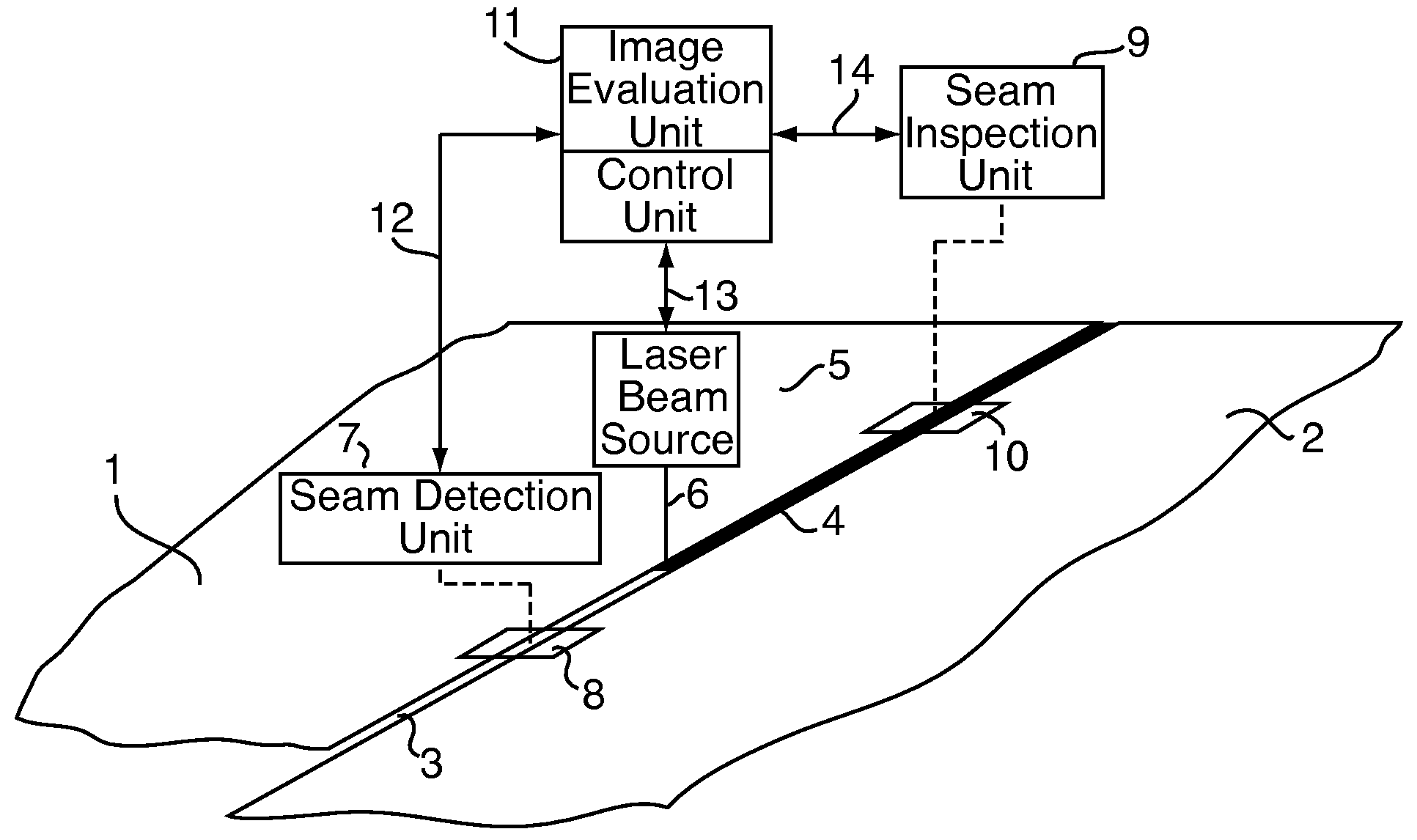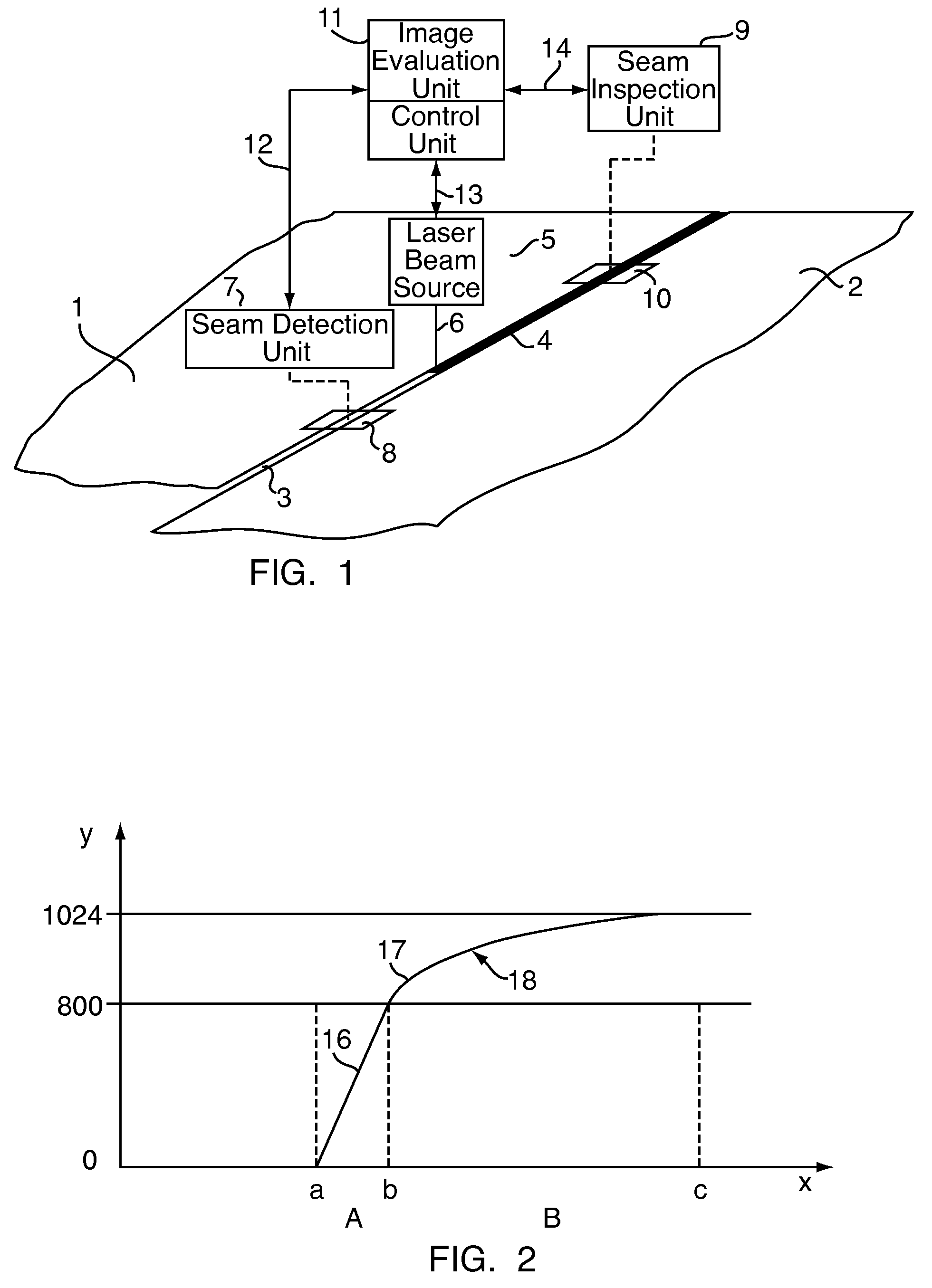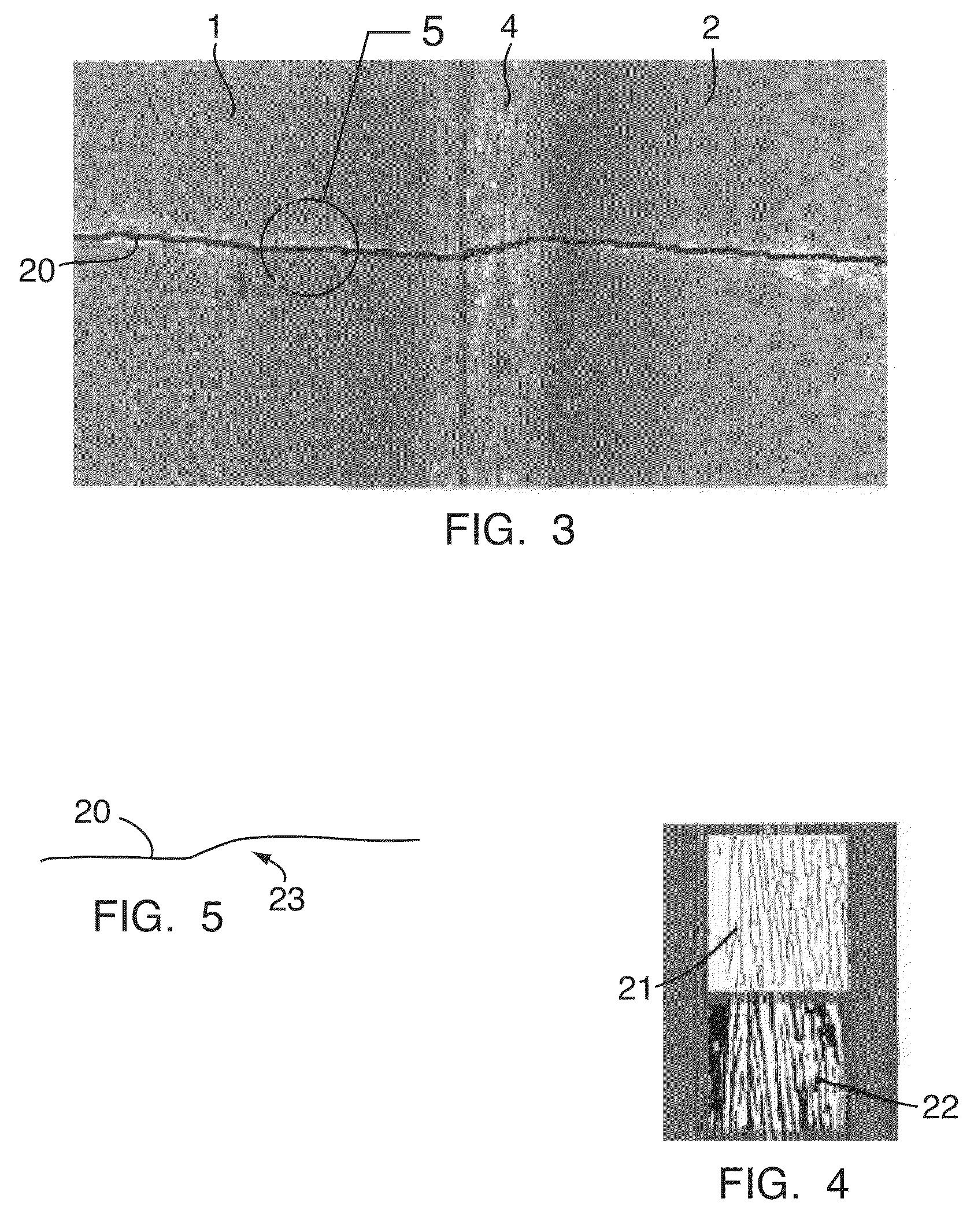Method and device for evaluation of jointing regions on workpieces
a technology of jointing region and workpiece, which is applied in the direction of electric/magnetic/electromagnetic heating, instruments, television systems, etc., can solve the problems of inability to obtain a high-quality weld seam, the joint is not detected, and the edge damage of the parts is not visible, so as to improve the recording of grey-level images, improve the inspection of the joint, and add separation
- Summary
- Abstract
- Description
- Claims
- Application Information
AI Technical Summary
Benefits of technology
Problems solved by technology
Method used
Image
Examples
Embodiment Construction
[0025]FIG. 1 shows schematically the welding of a tailored blank (Platine) which is made up of metal sheets 1 and 2 butted together along a joint line 3. Sheet-metal components (usually flat) of different thickness and / or different material properties are joined to make a single element, the tailored blank (Platine). Usually this element is subsequently shaped into a component, e.g., a component for a motor vehicle. A laser beam 6 from a laser beam source 5 is guided along the joint line 3, welding the sheets 1 and 2 together and leaving the weld seam 4 behind it. It is immaterial whether the laser beam source 5 moves over stationary workpieces or the workpieces are traversed past a stationary laser. It is known to ascertain the position of the joint line 3 with a seam detection unit 7 in order that the laser beam source 5 and beam 6 can be made to follow the course of the joint line exactly. In a known manner, the course of the joint line 3 is detected by the light section method a...
PUM
| Property | Measurement | Unit |
|---|---|---|
| scanning frequency | aaaaa | aaaaa |
| scanning frequency | aaaaa | aaaaa |
| wavelength | aaaaa | aaaaa |
Abstract
Description
Claims
Application Information
 Login to View More
Login to View More - R&D
- Intellectual Property
- Life Sciences
- Materials
- Tech Scout
- Unparalleled Data Quality
- Higher Quality Content
- 60% Fewer Hallucinations
Browse by: Latest US Patents, China's latest patents, Technical Efficacy Thesaurus, Application Domain, Technology Topic, Popular Technical Reports.
© 2025 PatSnap. All rights reserved.Legal|Privacy policy|Modern Slavery Act Transparency Statement|Sitemap|About US| Contact US: help@patsnap.com



